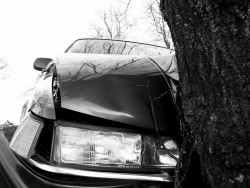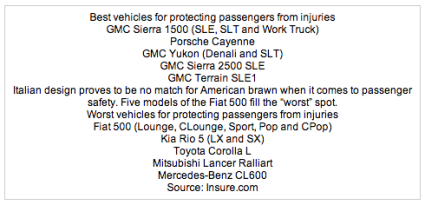
Those who are looking for a safer car for themselves and their families should take the memorable advice of the Insurance Institute for Highway Safety and a recent Insure.com report: bigger is usually better.An Insurance Institute for Highway Safety spokesperson stated, “If safety is a priority, you should avoid the smallest cars…Weight counts. Smaller, lighter cars are safer than they used to be, but all things being equal, people riding in bigger, heavier vehicles get more protection.”
Smaller vehicles are more likely to be pushed back in the case of head-on collisions. In addition, there is typically less “crush space” in the front of the vehicle, which cushions the passengers as the vehicle abruptly stops.
In a recent study, Insure.com analyzed the insurance rates for over 750 vehicles to find the vehicles with the lowest and highest costs for Personal Injury Protection (PIP) and Medical Payments (MedPay).
The study found that bigger cars fare better with regard to passenger safety. Several GMC models of pickup trucks, including the Sierra and the Yukon, were named the best vehicles to prevent injuries. The worst cars included models from Fiat, Kia, Toyota, Mitsubishi, and Mercedes-Benz.
See below for a list of the best and worst cars to avoid injuries:
